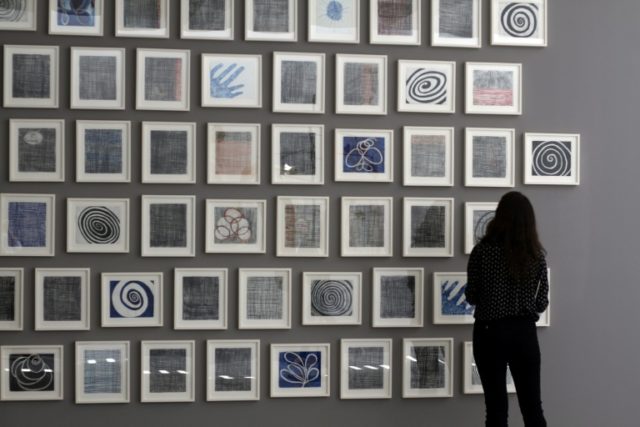Potomac (United States) (AFP) – There’s something deeply unsettling about navigating through the latest Louise Bourgeois exhibition, an experience that feels like trespassing in the late French-American artist’s psyche.
A five-decade survey that opened Thursday at the private Glenstone museum in the town of Potomac, Maryland outside Washington explores the breadth of deeply autobiographical, sexually-charged creations by this prolific artist, best known for her giant metal spider sculptures displayed around the world.
Traumatized as a child by her philandering father’s infidelities, including with her nanny, Bourgeois took a revenge of sorts with “The Destruction of the Father” (1974), her first large-scale installation.
A red-lit room lined in soft fabric suggests a womb-like bedroom/dining room, but also a crime scene.
Abstract blobs represent children who have rebelled against their overbearing father, murdered him and eaten him up, his body reduced to lamb shoulders and chicken legs cast in soft plaster.
“So he was liquidated… the same way he had liquidated his children,” Bourgeois once said about the piece.
Nothing surprising, really, for someone who said “art is a guarantee of sanity.”
The ferocious aspects of Bourgeois’s femininity are on display in an untitled piece from 1996 that’s a macabre take on a mobile or clothing tree, with fine undergarments hanging from huge bones.
Jerry Gorovoy, Bourgeois’s longtime assistant who now leads the Easton Foundation dedicated to her life and work, recalled that the artist kept most of her old clothes — including from her childhood — and used them for her creations.
“Ode a la Bievre” (2002), an embroidered book made of fabric pieces, pays tribute to the tannin-rich river that ran near the Bourgeois family’s tapestry restoration workshop.
In “Cell (Choisy)” (1990-1993), Bourgeois placed a guillotine in front of a reproduction of her childhood home in hollow flesh-colored marble inside a metal enclosure lined with knocked out windows.
There are architectural qualities to “He Disappeared into Complete Silence,” a book of engravings and letterpress text Bourgeois first made in 1947, here in an edition she reworked through 2005.
Various figures are represented as large, inhuman structures in a world where communication is often problematic.
On one page, a tall figure holds up a smaller one. Bourgeois’s accompanying parable: “Once a man was angry at his wife, he cut her into small pieces, made a stew of her. Then he telephoned to his friends and asked them for a cocktail-and-stew party. They all came and had a good time.”
– ‘Unparalleled’ –
Glenstone founders Mitch and Emily Rales amassed this varied assemblage of the artist’s works over just a few years.
Having an in-house collection has its advantages. Totem-like wood structures were drilled directly into the floor as they were originally intended to be shown, rather than fixed on a metal base, as other museums have traditionally done.
Gorovoy called Glenstone’s holdings of late pieces in particular “unparalleled.”
“To take this in-depth trajectory is really significant,” he said.
There’s a series of six hand-colored etchings, “I Give Everything Away,” that Bourgeois created in 2010, the year she died at the age of 98.
The elderly artist here made her final goodbyes with messages such as “I am packing my bags” in shaky handwriting alongside large images of humans, plants or abstract forms.
After taking this journey, it’s a relief to step out into Glenstone’s carefully manicured landscape of rolling hills, meadows and woodlands, the air filled with birdsongs and the sun-tinged fragrance of spring.
“Louise Bourgeois: To Unravel a Torment” runs through January 2020, with a temporary closure in September as Glenstone prepares to unveil on October 4 the site’s stunning expansion that will make it America’s biggest private art museum.

COMMENTS
Please let us know if you're having issues with commenting.